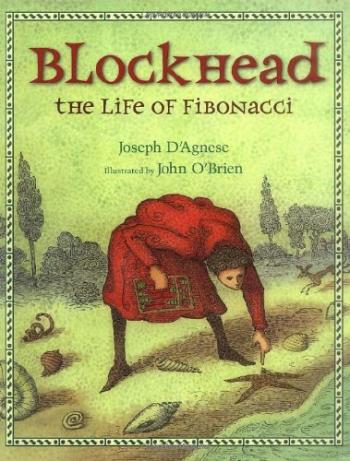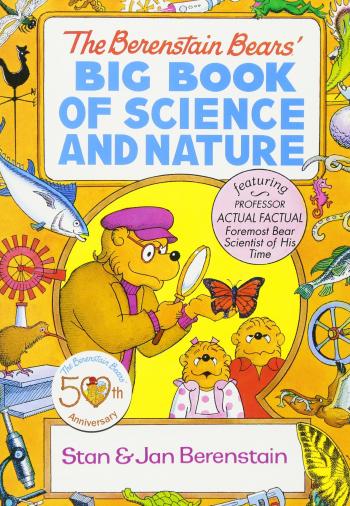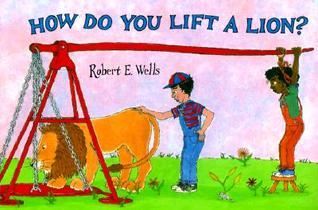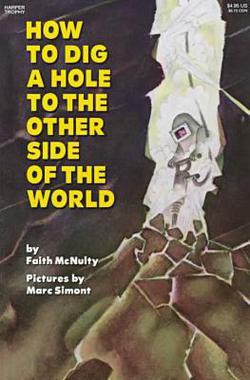
scrounge: /skrounj/ informal verb: to actively seek [books] from any available source

Swirl by Swirl uses bold, detailed illustrations and simple, poetic text to show us a variety of swirls and spirals in nature, and some of the places they are found. From ferns and flower petals to octopus arms and waves, this pattern shows up over and over again, and different descriptive and action words accompany it on each page.
This would make a great introduction (or follow-up) to Blockhead: The Life of Fibonacci (see our review here), which covers this topic with more of a focus on the math, as well as on Fibonacci himself.
This book does bring up Fibonacci in the informational page at the end, but overall it focuses more on the beauty, ubiquity, and different forms of the spiral pattern rather than the math behind it (not to imply that these things are mutually exclusive).
Scrounged From: Our local library
Format: Hardcover
Author: Joyce Sidman
Illustrator: Beth Krommes
Pages: 40
Content Advisory: None

I'll be honest, words tend to hold much more interest for me than numbers. But that means that if I'm going to learn about a new mathematical concept, a picture book like Blockhead: The Life of Fibonacci is probably the best way to do so.
The author, Joseph D'Agnese, admits in the informational page at the end that very little is actually known of Fibonacci's life. So some aspects of this story are speculation, but we are told the basics: that Leonardo Fibonacci was born in Italy in the 1170s and became one of the greatest known Western mathematicians of the Middle Ages.
This book is written from a first-person perspective, and the title is taken from Fibonacci's nickname, "Bigollo," which could mean "traveler," but could also mean "idler, dreamer, or lazy person." In this story, Fibonacci's obsession with numbers leads to him being labeled as a "blockhead" by some, which of course is not true.
As we learn (through dialog with Fibonacci's friend, Alfredo), Fibonacci not only popularized the Hindu-Arabic numeral system that we use today, but he also noticed numerical patterns in the world around him that came up over and over again. This book includes an explanation of his "rabbit problem," (leading to the Fibonacci sequence) and a visualization of the golden ratio spiral. The illustrations include several other examples of the fibonacci sequence in nature, which readers are invited to go back and search for on the last page.
While the book does not really delve into the implications of these numbers, it still gave me a visually engaging way to learn about them, as well as an appreciation for Fibonacci's curiosity, and the incredible complexity of nature. As Fibonacci tells us at the end, "Now you see why I don't mind being called Blockhead, after all!"
Scrounged From: Amazon
Format: Hardcover
Author: Joseph D'Agnese
Illustrator: John O'Brien
Pages: 40
Content Advisory: None (though some may object to use of the phrase "mother nature")

The Berenstain Bears' Big Book of Science and Nature has been a very enjoyable and informative read for us. Our four-year-old has asked to read it many times now, after we read it for pre-K.
This book is actually three "books" combined. The first section is the Almanac, which introduces children to the concept of a "year," and all the different changes that take place over the course of it, from major holidays such as New Year's, Independence Day, and Thanksgiving, to seasons and the way the weather changes in each one, and explanations of major weather events like thunderstorms, wind, and snow.
The second section is the Nature Guide. This gives an overview of all the different kinds of life on our planet, as well as non-living things like rocks and other geographical features. From fish to mammals to plants and insects, the bears (with Papa as tour guide) experience a little bit of just about everything!
The last section is the Science Fair, which I found to be a bit more detailed than the others, but still just as fun. We learn about simple machines, matter (including the three states of solid, liquid, and gas), and energy. Included are a few easy science experiments that children and adults can do at home to help demonstrate some of these ideas.
Even though it's instructive, the book manages to rhyme well in each section, which adds to the fun of reading.
Scrounged From: Amazon (used)
Format: Paperback
Authors/Illustrators: Stan and Jan Berenstain
Pages: 192
Content Advisory: None
This is a fun and informative series of books, written and illustrated by Robert E. Wells, that helps introduce some basic science concepts to children. They are geared mainly toward pre-kindergarten through third grade, but they can be enjoyed by any age.

Our favorite of the ones we've read is How Do You Lift a Lion? which introduces simple machines such as the lever, wheel, and pulley. The illustrations are clear and clever, and show how a lion could be lifted if you had enough leverage. We are also shown how to pull a panda on a pallet, and how it could be possible to deliver a big basket of bananas to a baboon birthday party using pulleys.
Is a Blue Whale the Biggest Thing There Is? is another entry in the series. Here we are shown progressively bigger things from whales to earth to stars, until we get to the size (or what is known of it) of the whole universe! You definitely feel small after reading this book, and the illlustrations are very amusing at times (such as a crate of "sun-sized oranges" to demonstrate how our sun compares in size to a red supergiant).
What's Smaller Than a Pygmy Shrew? covers the same idea, but getting progressively smaller, from a shrew to a ladybug to protozoa and protons. This one may be harder to wrap one's mind around, but does a great job of helping us to visualize the idea that there is a whole kingdom of living organisms that are too small for our eyes to see.
We also enjoy What's Faster Than a Speeding Cheetah? which shows us many things that are faster than a cheetah, such as a peregrine falcon, a rocket, and a meteoroid.
These are the only titles we've read so far, but there are several others that sound just as interesting, such as Why Do Elephants Need the Sun?

How to Dig a Hole to the Other Side of the World was written by Faith McNulty, and illustrated by Marc Simont in 1979. This book is the perfect mix of silliness and scientific instruction for children, and is recommended for ages 4 to 8.
I remember, as a child, wondering if it was possible to dig a hole "to China" (never mind that I'm not geographically opposite China -- that was always "the other side of the world" to us). I think every child wonders this at some point. This book explores the challenges we would face in digging such a hole, and describes the things we would discover as we did so.
Along the way, we learn about different kinds of rocks, and about volcanoes and geysers, which gave rise to all sorts of questions when we read this to our then-3-year-old.
As you progress in your journey through the earth, you have to go from digging with a shovel to digging with a jackhammer, to wearing an asbestos suit (this book was written before asbestos-based fire-proximity suits were phased out in favor of other materials), to riding in a submarine with a super-cooling system, a fireproof skin, and a drilling mechanism.
All in all, this book does a great job of introducing young children to the size and structure of our planet in an engaging way, and provides launching points for discussion of further topics.
Scrounged From: PaperbackSwap.com
Format: Paperback
Author: Faith McNulty
Illustrator: Marc Simont
Pages: 32
Content Advisory: None


